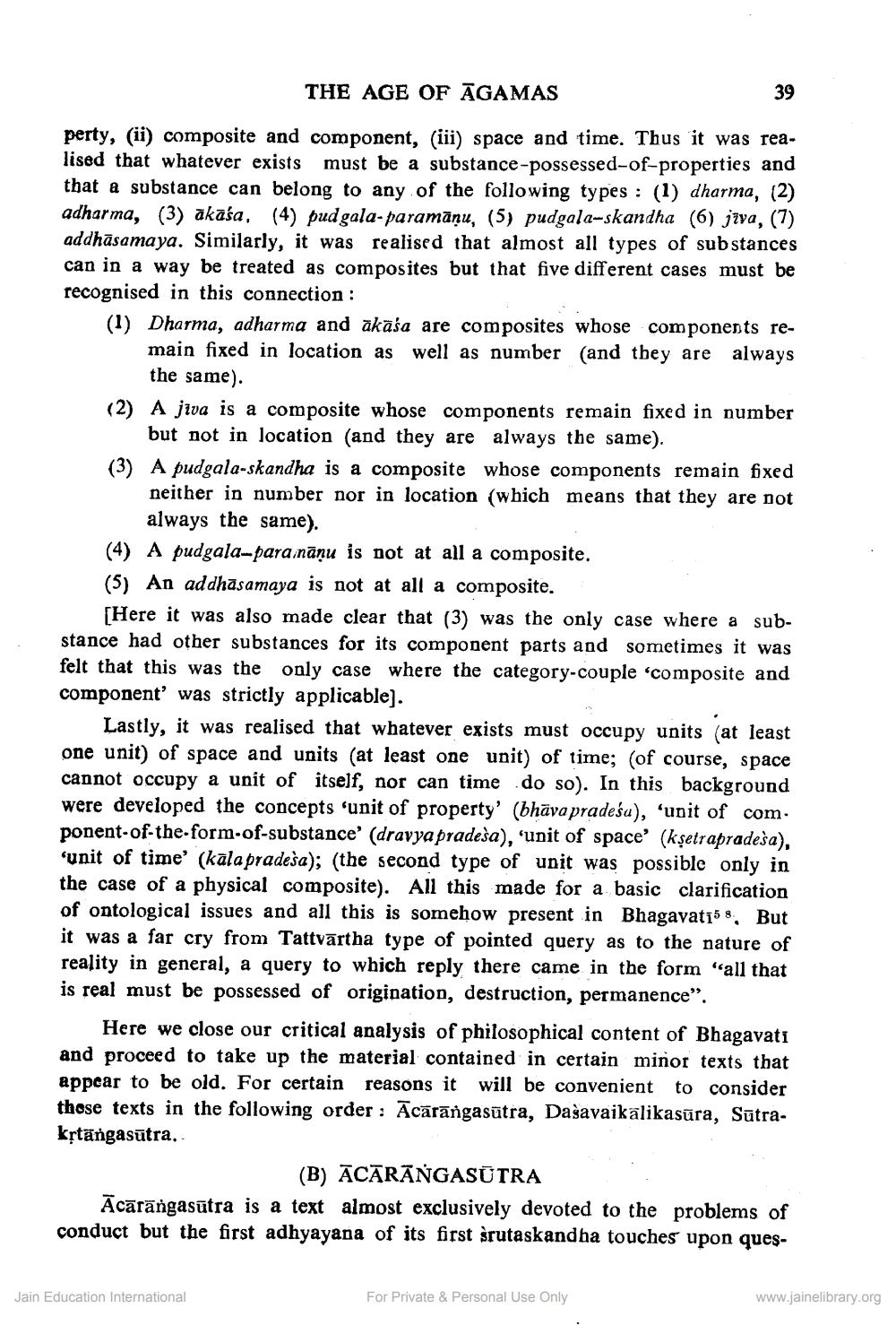________________
THE AGE OF ĀGAMAS
39
perty, (ii) composite and component, (iii) space and time. Thus it was rea
at whatever exists must be a substance-possessed-of-properties and that a substance can belong to any of the following types : (1) dharma, (2) adharma, (3) akaśa, (4) pud gala-paramānu, (5) pudgala-skandha (6) jiva, (7) addhāsamaya. Similarly, it was realised that almost all types of substances can in a way be treated as composites but that five different cases must be recognised in this connection: (1) Dharma, adharma and akasa are composites whose components re
main fixed in location as well as number (and they are always
the same). (2) A jiva is a composite whose components remain fixed in number
but not in location (and they are always the same). (3) A pudgala-skandha is a composite whose components remain fixed
neither in number nor in location (which means that they are not
always the same). (4) A pudgala-para nāņu is not at all a composite. (5) An addhasamaya is not at all a composite.
[Here it was also made clear that (3) was the only case where a substance had other substances for its component parts and sometimes it was felt that this was the only case where the category-couple 'composite and component' was strictly applicable).
Lastly, it was realised that whatever exists must occupy units (at least one unit) of space and units (at least one unit) of time; (of course, space cannot occupy a unit of itself, nor can time do so). In this background were developed the concepts 'unit of property' (bhāva pradeśa), 'unit of com. ponent-of-the-form-of-substance' (dravya pradeša), 'unit of space' (kşetrapradesa), 'unit of time' (kala pradeša); (the second type of unit was possible only in the case of a physical composite). All this made for a basic clarification of ontological issues and all this is somehow present in Bhagavati58, But it was a far cry from Tattvārtha type of pointed query as to the nature of reality in general, a query to which reply there came in the form "all that is real must be possessed of origination, destruction, permanence".
Here we close our critical analysis of philosophical content of Bhagavati and proceed to take up the material contained in certain minor texts that appear to be old. For certain reasons it will be convenient to consider these texts in the following order : Ācārāngasūtra, Dasavaikälikasüra, Sūtrakştāngasūtra.
(B) ĀCĀRĀNGASŪTRA Ācārängasūtra is a text almost exclusively devoted to the problems of conduct but the first adhyayana of its first srutaskandha touches upon ques
Jain Education International
For Private & Personal Use Only
www.jainelibrary.org




